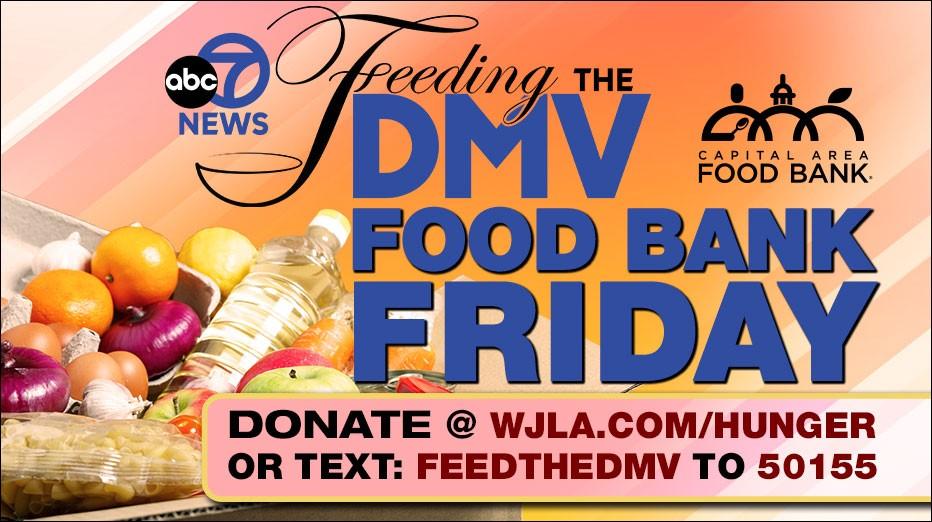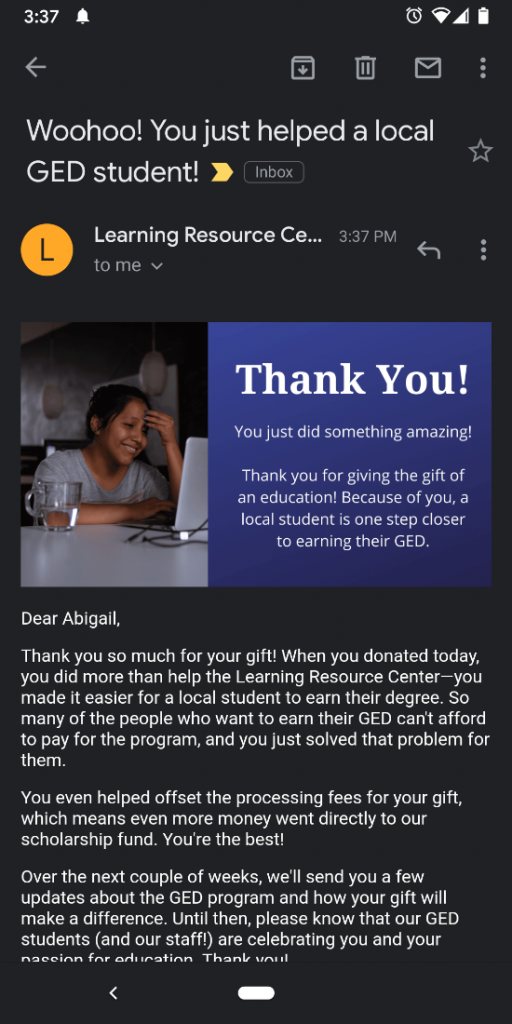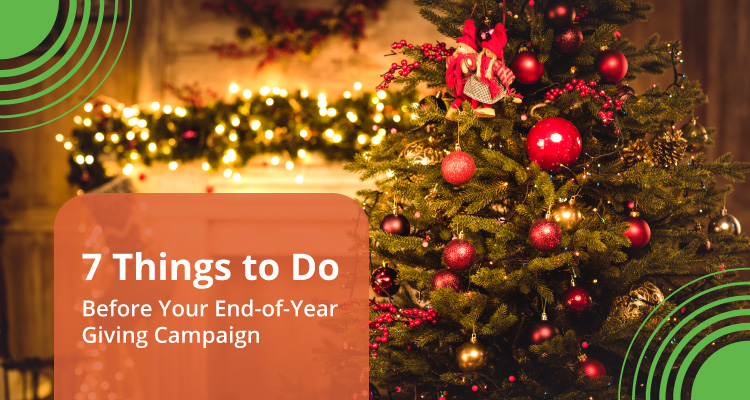
If you feel like 2021 has been a blur, you’re not alone. It has been for us, too! But, ready or not, it’s time to start planning your end-of-year giving campaign… even though it’s only September! Laying out a plan now will ensure you’re prepared for your end-of-year campaign. Starting now will give you plenty of time to be deliberate instead of rushing.
Here are 7 simple steps to take as you prepare for your year-end fundraising campaigns:
1. Set a fundraising goal
The first step in preparing for year-end fundraising is setting a goal for your campaign. The more specific you can be with your goal, the better!
Why is this important?
Having a specific fundraising goal for your campaign is important for a few reasons. It gives you something to work for, and your goal will inform your decision-making during the planning process. If your goal is to raise $25,000, you’ll approach fundraising differently than if you needed to raise $5,000!
Setting a goal also helps get everyone at your organization on the same page. Get other departments involved in the goal-setting process! It will be easier for your organization to work together to hit your goal if everyone understands what you need to raise and what that money will achieve.
Setting a specific goal can also help you during your next year-end campaign. It gives you something to measure yourself against so you can plan more effectively next year! If your fundraising goal for the 2021 holiday season is $20,000 and you meet your goal, you can mimic your campaign strategies next year. If you fall short of your fundraising goal, you’ll be able to identify areas for improvement and adjust next year’s campaign accordingly.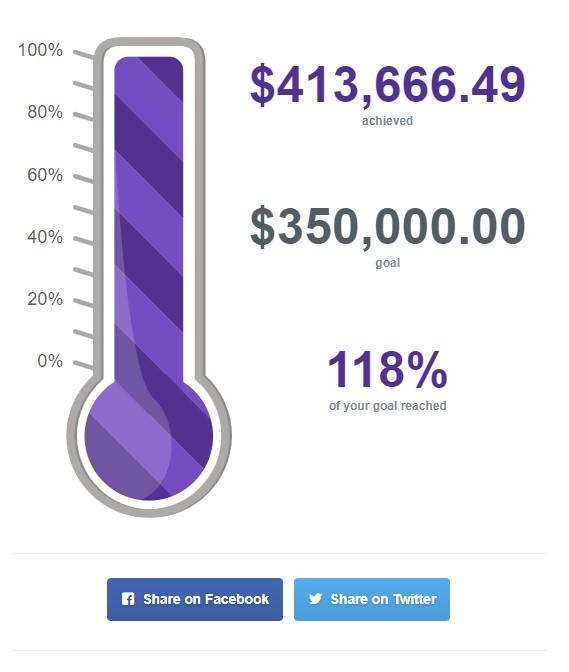
How do I set a good fundraising goal for my end-of-year giving campaign?
Perhaps the easiest way to set a fundraising goal is to look at how much you raised last year and adjust your current goal accordingly. If you met your $20,000 fundraising goal last year, you may choose to bump this year’s goal up a little bit and shoot to raise $22,000 this year. If your 2020 year-end fundraising goal was $20,000 and you raised $15,000, try setting a goal of $18,000 this year. Your goal should be ambitious but achievable.
If you’re like most development staff, you’re not the only person involved in the goal-setting process. Your development team, executive director, board members, and other staff members should be involved, too! When they’re involved in this part of the process, everyone will understand how much should be raised, what that money will support, and their part in the fundraising process. Making sure everyone understands the scope of your year-end campaign will help prevent misunderstandings and shifting expectations during the campaign itself!
2. Choose your campaign’s theme
The next step is to choose the theme, story, or purpose behind your campaign. This could be something as general as “hope,” or as specific as a particular program your campaign supports.
Why should I choose a theme?
Your end-of-year giving campaign will probably include lots of different marketing channels, emails, direct mail appeals, and other fundraising efforts. Keeping your messaging consistent across multiple channels over weeks or months is hard! Choosing a theme will help you keep your messaging, branding, and marketing assets consistent throughout your campaign. That consistency makes your nonprofit look organized and trustworthy to the different audiences who interact with you.
Keeping your messaging consistent also creates a better experience for your donors, especially when donors interact with you on different channels. If a direct mail donor gets an appeal for support for a particular program but sees different messaging on your social media channels, they may get confused about what their donation will actually support. If you send a fundraising email asking for support for your food pantry but send donors to a donation form that includes language around your job-training program, donors may think they’ve landed on the wrong donation form and decide not to give.
Choosing a theme before you launch your campaign also makes content creation easier. If you know your theme this year is “Hope,” you can emphasize how donors’ gifts offer hope to their communities. You can extend that messaging to your appeals, updates, social media posts, and more. Since you already know your theme, you’ll be able to anticipate the general feel of the images, videos, and other design elements you’ll need to support your campaign, too.
Once you’ve chosen your theme or story, share it with your other departments! When everyone at your organization understands your theme, they may be able to extend that messaging to their own activities. Program staff, support staff, and even volunteers and board members may also have ideas for marketing assets or supporting stories you may not have thought of.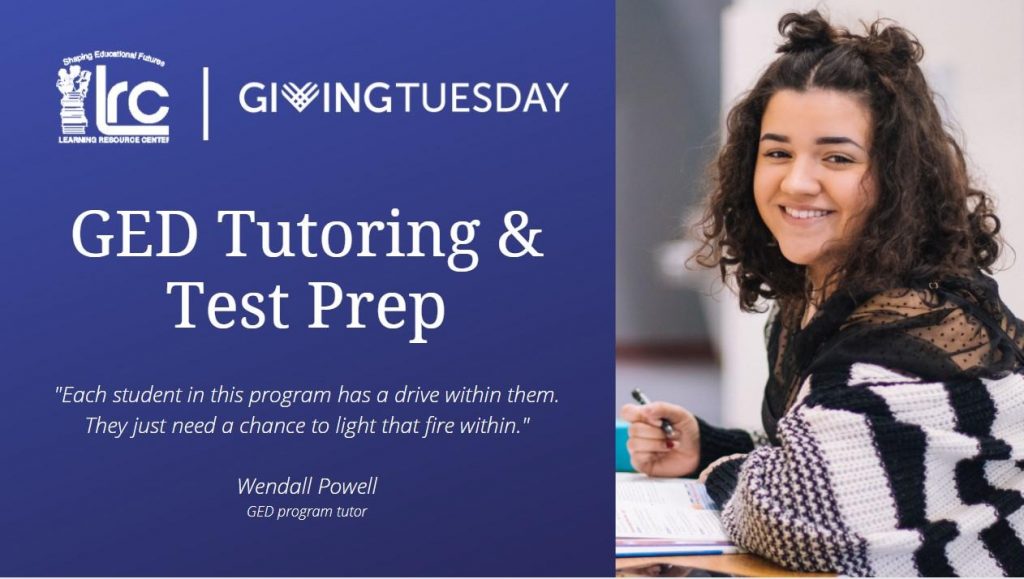
How do I choose a campaign theme?
There are two different approaches you could take! First, you could choose a program or tangible goal you want to fund. If you choose to focus on your GED prep program for your year-end campaign, you can work on creating marketing assets and appeals that highlight why donors should support this program and the impact they can make. You can contact former clients who have benefitted from this program and ask them to share personal stories about the impact donors make when they give to this program! If you decided to run a campaign to update your facility, you could emphasize how donors’ gifts will make your facility a happier, better place for your clients.
The next possible approach is to choose a broader theme that can be used to support multiple programs. If you chose the theme “thankfulness,” for example, you could center your content on how thankful your clients are to the donors that support them. You could also create content around how thankful you are for your donors’ past support and an invitation for them to give again.
Once you choose your theme, you’re ready for the next step in the planning process, which is to:
3. Build a content plan
Your theme will help guide you as you decide what content you’ll need to support your campaign. Everything you create will incorporate that theme!
Why should I create a content plan?
Planning your content in advance can feel a little silly. Why spend time making a list of the content you’re going to create? Why not just jump into the creation process? Having a content plan will keep your messaging consistent across different channels, regardless of who’s creating that content. Keep in mind that old expression, “too many cooks can spoil the broth.” If you have different groups of people creating their own content without paying attention to what others are doing, your campaign can seem disjointed and awkward. If everyone is working off the same content plan—if all your “cooks” are following the same recipe—consistency will be much easier to achieve.
Creating a content plan also makes your life easier when you’re in the midst of running your end-of-year giving campaign. The year-end fundraising season is busy, and there’s always lots to do. Making decisions and coming up with new ideas when you’re busy and stressed is tough. Planning ahead of time means you won’t have to make decisions or think of new ideas; you already know what you need to do and when you need to do it.
How do I create a content plan for my end-of-year giving campaign?
There are three basic steps to creating a content plan. The first step is to decide what you’re going to post and when you’re going to post it. Get detailed here! Decide what emails you’re going to send, the people who will receive them, and when you’re going to send them. Make a plan for your direct mail appeals and updates and when they need to be posted. Plan out what posts you’ll make to your social media channels and the dates and times they’ll go up.
Next, create a rough content calendar so everyone knows what communications are going out, when donors will see them, and what those communications contain. Everyone who creates or posts content should have access to this calendar! If your executive director knows you’re sending a direct mail appeal on November 17, they won’t be surprised when you ask them for their approval on November 3. If your bookkeeping staff knows you’re sending an email appeal on December 16, they won’t be taken off-guard when there’s a higher volume of donations coming in.
Then, make a list of the assets you’ll need to support your campaign. You’ll want client stories, images, and a video or two, all of which will include your theme. Planning this in advance will help you anticipate everything you’ll need to successfully run your campaign. It also helps you avoid spending time and resources creating assets you don’t need!
4. Create your campaign’s donation form (or forms)
Once you’ve solidified your campaign’s theme and created a rough content plan, it’s time to build the donation form (or forms) you’ll use during your end-of-year giving campaign. It’s important to have your theme planned out before this step!
Why should I create a donation form for this campaign?
It may be tempting to use the same donation form you’ve been using all year to support this campaign. But taking the time to extend your campaign’s theme to your donation form is a powerful fundraising strategy! It creates a sense of continuity for donors and reinforces their decision to give. Imagine this: a donor reads a client’s story on your Facebook page. The post included a story about a puppy that received life-saving medical attention at your facility and an appeal for donations to your animal clinic. Your donor clicked on the link in your post and landed on a generic donation form. What is the likelihood that they give?
Then imagine instead that they read your post, clicked on the link, and landed on a donation form that included an image of the puppy mentioned in your post and a note about how their gift will provide life-saving medical treatment for animals. They’re much more likely to donate because your form ties them directly to the story that inspired them to give in the first place.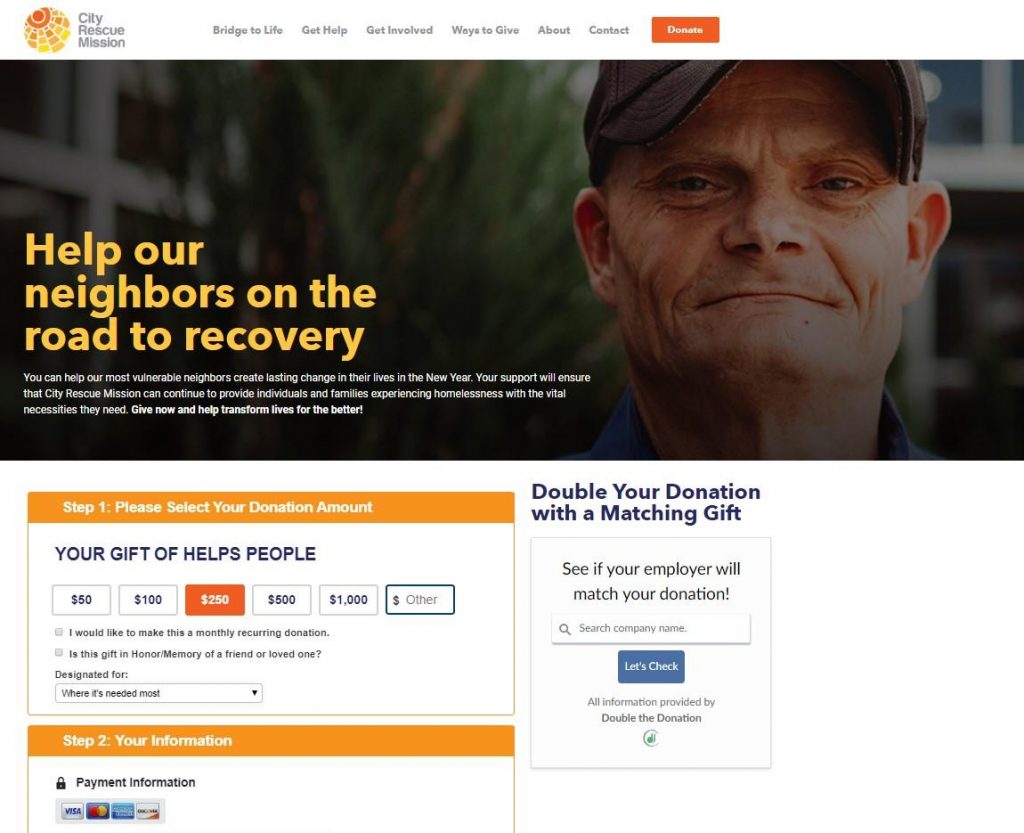
How do I create a great donation form for my end-of-year giving campaign?
At Qgiv, we have lots of different pointers that will help you put together the best-ever donation form. Check out our article on tips for year-end donation forms for pointers, or read our article on how to use visual elements to reinforce your appeals (hint: your campaign theme is key here!). You can also download interactive donation form templates!
While you’re creating your donation form, you may want to consider creating a few different versions. Creating unique donation forms for different appeals, different donor segments, or different channels achieves a few things! It can help you track your donation sources and may make bookkeeping easier. If you’re curious about what this looks like in practice, here are some examples:
- If you’re running a text-to-donate campaign, you may create a donation form specifically for text-based gifts. This will make it easy to identify which donors prefer to give this way.
- If you’re segmenting your email appeals and are asking monthly donors to give someone extra, you may want to create a donation form that includes smaller one-time gift amounts and language specifically aimed at recurring donors.
- If you’re segmenting your appeals based on past giving levels, you might want to build a donation form for mid-level donors that include higher suggested donation amounts than the form you send to smaller donors.
Whether or not you create multiple donation forms is up to you! It’s not necessary, but it can be helpful as you track how each of your posts, appeals, and marketing campaigns support your end-of-year giving campaign.
5. Choose your supporting tools
Depending on the scope of your end-of-year giving campaign, you may choose to use multiple fundraising strategies to support your work. Tools like text fundraising keywords, peer-to-peer fundraisers, events, silent auctions, and others can help get you closer to your fundraising goal.
Why should I consider using different fundraising tools?
Different donors like to give through different channels. Some donors prefer to give online. Others prefer to give by text. Still others may prefer to attend a fundraising event or raise money on your behalf. However they choose to support you, making it easy for a donor to give using their preferred method is key!
If you’re running a campaign with multiple fundraising styles, it’s important to nail them down ahead of time. Some fundraising strategies—like holiday galas, peer-to-peer events, or silent auctions—take time and effort to execute. Adding them to your strategy last-minute creates a ton of stress!
How do I decide what supporting tools to use?
Take a look at how your donors support you throughout the year, then use those patterns to identify ways to engage them on different channels. Do you have a highly-engaged donor or volunteer base? You may want to consider trying a peer-to-peer event that gives those supporters a way to raise money on your behalf. Do you have a base of younger donors? You might want to try using text fundraising (psst: text donations are popular with lots of different donor segments—if you create a text fundraising keyword, share it everywhere!). Are you running an event? You may want to explore online registrations, silent auction elements, or hybrid/virtual event formats.
As you decide which supporting tools (if any) you’re going to use in your end-of-year giving campaign, ask yourself these questions:
- Have these methods been popular in the past?
- Do we have room in our budget to try these tools?
- How will we spread the word about these different opportunities to give?
- Do these supporting tools make sense for our donor base?
Any additional tools or fundraising methods you include in your campaign should be carefully chosen! Make sure you understand how you’ll use each tool to reach specific audiences before you make any major decisions.
6. Build your donation receipts
Once you’ve identified all the different fundraising tools and channels you’ll use, it’s time to build the donation receipts your donors will receive after making a gift.
Why should I spend time creating donation receipts?
Regardless of the tools you use, your donors will need receipts for the gifts they make. Donation receipts will, of course, include details about the donor’s transaction: their gift amount, their payment information, and other specifics about their donation are important. But receipts aren’t only a transactional requirement—they’re also a valuable (and often overlooked) donor retention tool!
Your donation receipts are the first interaction you have with a donor after they make a gift. Take advantage of them! Include pictures, thank-you messaging, and impact statements to make donors feel amazing about supporting your work.
How do I create an outstanding donation receipt?
There are a few elements you’ll want to include in your donation receipts. As you build the different receipts you’ll send your donors, make sure you:
- Add a great image that relates to the theme/story you’ve chosen
- Thank donors sincerely and enthusiastically for their gift (don’t make another ask here!)
- Add an impact statement that makes them feel great and shows them the difference they’ve made by giving to your nonprofit
- Set expectations for future communications so donors know what to expect from their relationship with you
Building great receipts does more than give donors transactional details to keep for their records. It can also make them feel good about giving, assure them that their gift will make a difference, and set the stage for future interactions. Check out this article for an in-depth breakdown of what to include in an awesome receipt!
7. Plan or update your donor retention strategy
If you’re like most nonprofits, you’ll see an influx of new donors as a result of your end-of-year giving campaign. It’s tempting to get to the end of the year, wrap up your fundraising campaign on January 1, and move to the next project. Resist that temptation! You need to have an active donor retention strategy in place that will help you keep the donors you acquired during your campaign.
Why is having a donor retention strategy so important?
You spent a great deal of time, money, and effort creating your giving campaign and inspiring people to donate. Keeping those donors by setting the stage for them to donate again gives you a better return on that investment. If you spent $35 acquiring each new donor who gave to your year-end campaign and the average gift is $50, you’ve netted $15. If you can inspire those donors to give again, that net increases. It’s less expensive to retain donors than it is to acquire new ones!
How do I retain my new donors?
To keep your new donors, remember this cycle: ask, thank, report, repeat. Ask for a donation, thank the donor for giving you a gift, report what impact they’ve made with their gift, and then start the cycle over again. This is called The Virtuous Fundraising Cycle, a term first coined by the folks over at The Better Fundraising Co. Here’s what a basic cycle would look like:
- Ask for support. You’re already doing this! Any time you post to social media and ask for donations, send a direct mail appeal, email your donors to ask for support, or otherwise solicit donations, you’re in the “ask” phase of the cycle.
- Thank donors for their gift. Donors should be thanked in at least three places: they should see a sincere thank-you message on the donation confirmation page, should get another thank-you in their donation receipt, and then get a personalized thank-you letter, card, or email from your organization. Don’t ask them to do anything else! Just focus on thanking them and telling them what their gift will accomplish.
- Report the donor’s impact. Tell them how you’ve used their money! Share what their gift achieved. Did they feed hungry families? Did they support the puppies in your animal shelter? Have they helped build a new facility for your clients? Show them! Include pictures, personal testimonials, and stories. Make them feel like you’ve used their money wisely and tell them how their money made a difference.
- Repeat the process. If a donor understands their impact, they’ll be open to continuing that impact by giving again. Reporting a donor’s impact means you can ask again without fear!
Explore other opportunities to engage your new donors. You might try setting up a welcome email series for new donors that explains your mission and shows them the work they’re supporting with their gift. Want to learn more about welcome series? Here’s an article that covers how to create one—there are even templates!
You can also boost your donor retention rates by inviting new donors to stay engaged with you in non-financial ways. Invite feedback by sending a new donor survey or by calling selected donors to talk about their impressions of your nonprofit. Start building personal connections with them by inviting them to open houses or facility tours, giving them volunteer opportunities, or hosting donor appreciation events. The possibilities are endless! Anything you can do to reiterate a donor’s impact and build a personal relationship with them will increase the likelihood that they become loyal supporters.
Conclusion
It may feel a little silly to start planning your end-of-year giving campaign in September. But it’s worth it! Handling planning for your end-of-year fundraising campaigns now means you’ll have fewer decisions to make and less work to do when you’re in the thick of the holiday season. Get your leadership involved as you set a fundraising goal, choose a campaign theme, and start creating the content calendar you’ll use throughout the campaign. Build your donation forms and your receipts ahead of time so you don’t have to scramble to get them ready later. Set up and test your supporting tools, like text fundraising, events, and other strategies, then build out a donor retention strategy that will keep your donors engaged in the coming year.
Want to learn more? Check out our Year-End Giving Marketing Guide!
Author: Abby Jarvis
Abby Jarvis is the Nonprofit Education Manager at Qgiv, a company that’s dedicated to building powerful fundraising tools that empower nonprofits to thrive and grow. In her 8 years at Qgiv, Abby’s become passionate about understanding industry best practices, learning how they can help nonprofits be more effective, and sharing that information with other fundraisers.

